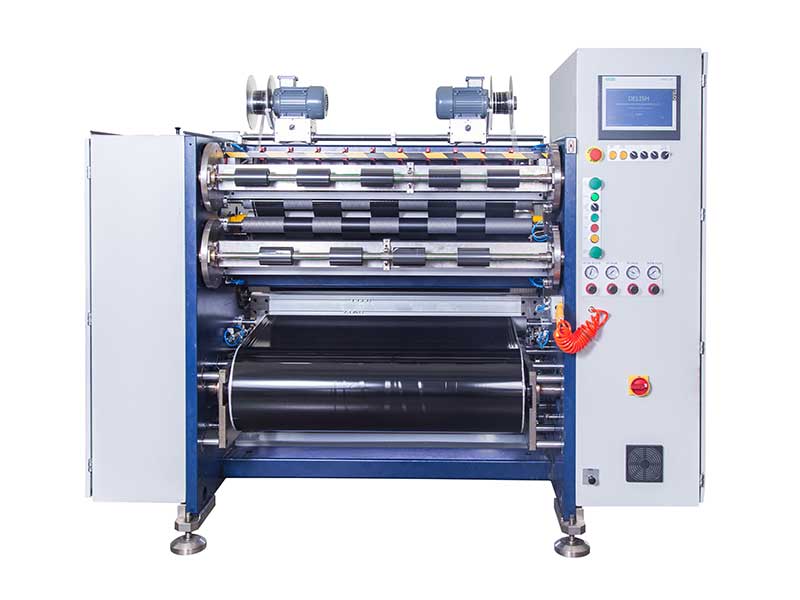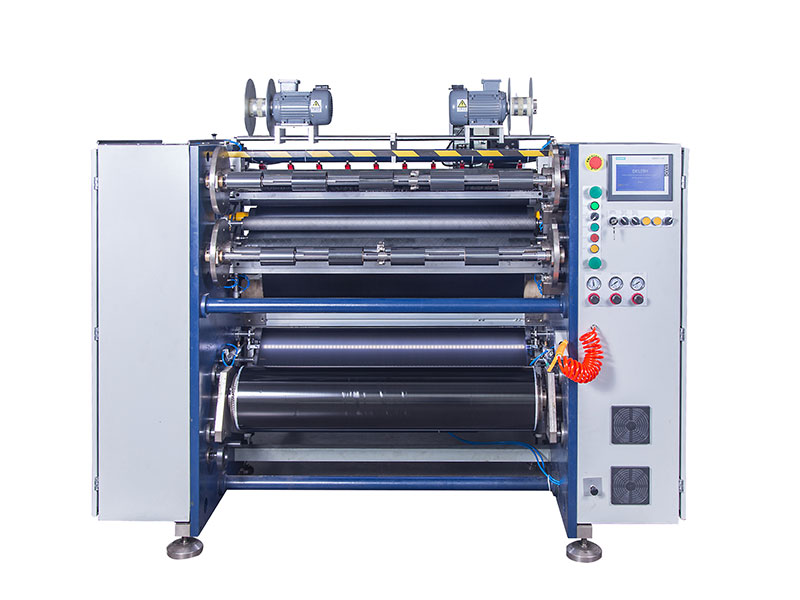Barcode ribbon slitter operation guide: from beginner to proficient
This guide will help you go from basic operation to proficient in barcode ribbon slitting.
First, introduction
1. Safety first
• Please read the manual carefully before operation and be familiar with the safe operation specifications of the equipment.
• Wear the necessary protective equipment, such as gloves and goggles.
• Make sure the equipment is well grounded to avoid the risk of electric shock.
• Never place your hands or other parts of your body near the blades and rotating parts while the machine is running.
2. Get to know the device
• Main components: unwinding shaft, winding shaft, guide roller, tension control system, slitting knife, control system, etc.
• Function: Slice large rolls of ribbon into small rolls of the desired width.

3. Basic operations
• Power on: Turn on the power and press the power switch.
• Loading: The large reel ribbon is mounted on the unwinding shaft and passed through the guide rollers and the tension control system.
• Set parameters: Set parameters such as slitting width, length, tension, etc. on the control panel.
• Start: Press the start button to start slitting.
• Rewinding: The slitted ribbon is wound on the reeling reel and stops automatically when the set length is reached.
• Unloading: Remove the small ribbons from the reel and pack them.
Second, advanced Chapter
1. Parameter optimization
• Slitting width: Set according to the requirements of the label printer.
• Slitting length: Set according to actual needs, generally slightly larger than the label length.
• Tension control: Too much tension can cause ribbon breakage, and too little can lead to uneven slitting.
• Slitting speed: Adjust according to the material and thickness of the ribbon, too fast will affect the slitting quality.
2. FAQ Handling
• Slitting unevenness: Check whether the blades are sharp, whether the tension is appropriate, and whether the guide rollers are parallel.
• Ribbon breakage: Check if the tension is too high and if the ribbon is damaged.
• Untidy winding: Check that the winding shaft is installed correctly and that the tension is even.

3. Maintenance
• Regular cleaning: Clean the surface and interior of the device from dust and toner.
• Lubrication Maintenance: Lubricate rotating parts regularly.
• Blade replacement: Replace the blade in time after passivation to ensure the quality of slitting.
Third, mastery
1. Advanced feature applications
• Automatic Deviation Correction: Automatically adjust the position of the ribbon to ensure the slitting accuracy.
• On-line detection: real-time detection of slitting quality and automatic rejection of defective products.
• Data statistics: Record production data for analysis and optimization.
2. Efficiency improvement
• Mass production: Arrange the production plan reasonably and reduce the time of material change.
• Automatic operation: Adopt automatic loading, unloading and other devices to improve production efficiency.
• Process optimization: Continuously optimize slitting parameters and operating processes to improve production efficiency and product quality.

3. Safety Specifications
• Operator Training: Professional training for operators to ensure safe operation.
• Emergency plan: Make an emergency plan and conduct regular drills.
• Equipment maintenance: Regular equipment maintenance and maintenance are carried out to eliminate potential safety hazards.
Fourth, summary
The operation of the barcode ribbon slitting machine requires certain skills and experience, through continuous learning and practice, you can gradually master the operation skills from beginner to proficient, and improve production efficiency and product quality.
Note: This guide is for reference only, please refer to the device manual for specific operation.
Recent Post
 Analysis of the application prospect of barcode ribbon slitting machine in the retail industry
Analysis of the application prospect of barcode ribbon slitting machine in the retail industry Customized solutions for barcode ribbon slitting machines: to meet individual requirements
Customized solutions for barcode ribbon slitting machines: to meet individual requirements The future development trend of barcode ribbon slitting machine: intelligence and automation
The future development trend of barcode ribbon slitting machine: intelligence and automation Barcode ribbon slitting machine market demand growth: future development trend forecast
Barcode ribbon slitting machine market demand growth: future development trend forecast
 Barcode Ribbon Slitting Machine
Barcode Ribbon Slitting Machine

